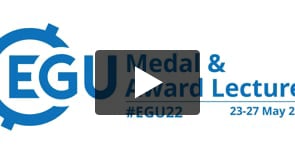MAL18
John Dalton Medal Lecture by Martha C. Anderson & Arne Richter Award for Outstanding ECS Lecture by Niko Wanders
Presentations
|
Tue, 24 May, 19:00–20:00 (CEST) Room B
Session assets
Presentations: Tue, 24 May | Room B
Chairperson: Maria-Helena Ramos
19:00–19:02
Introduction and citation
19:02–19:17
|
EGU22-3416
|
ECS
|
Arne Richter Award for Outstanding ECS Lecture
|
On-site presentation
19:17–19:22
Questions and answers
19:22–19:25
Introduction and citation
19:25–19:50
|
EGU22-6797
|
John Dalton Medal Lecture
|
Virtual presentation
19:50–20:00
Questions and answers
